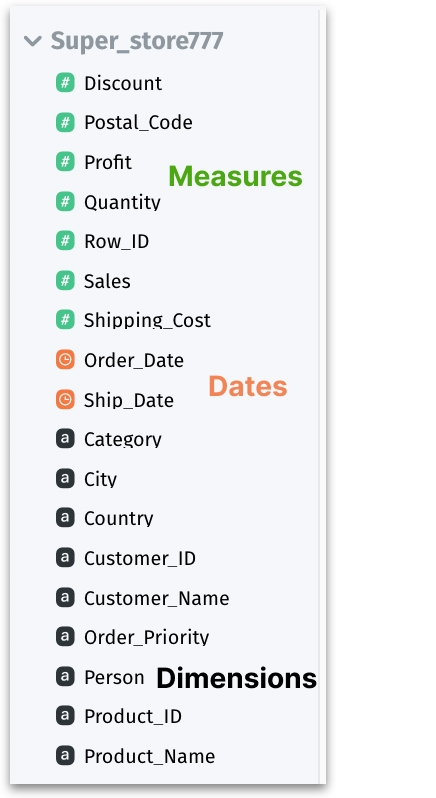#️⃣Measures, dimensions, date columns
Learn the difference between measures, dimensions, and date columns in Tellius and how each type shapes analysis, segmentation, and chart-building in Business Views.
A Business View consists of multiple columns, each falling into one of three distinct categories:
Measures
Dimensions
Date columns
Each column type comes with its unique set of attributes that define how they can be used. Understanding these three types of columns is key to effectively building charts and applying filters in Vizpads.

Measures
Measures refer to numerical data designed for quantitative analysis. They can be manipulated through mathematical operations, aggregations (average, sum, finding min-max), and calculations.
Example: Sales column, where one can calculate totals or average values. In Tellius, measures are denoted in green with a hash symbol.
Dimensions
Dimensions, in contrast, are qualitative attributes used for segmenting and categorizing your data. They represent categories or descriptors and are unsuitable for mathematical aggregations (such as sum or average). They are essential for slicing data into meaningful segments and providing context to the measures.
Examples: Region, Employee, and Location. Dimensions are represented in black color with an "a" symbol.
Date Columns
Date columns are specifically designated for time-related data. They represent time periods and are essential for temporal segmentation (tracking changes over time), like trend analysis, forecasting, or comparing data across different time periods. Sorting and filtering of data based on specific time frames is applicable (such as days, months, years, or custom-defined periods).
Examples: Order_Date, Ship_Date. Date columns are represented in orange color with a timer symbol.
Was this helpful?